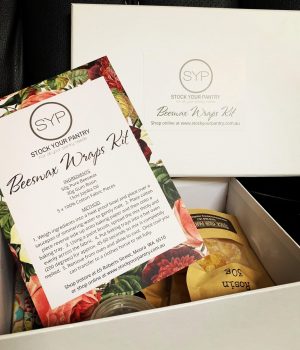It has been estimated that an average school lunchbox generates up to 30 kg of rubbish each year. Juice boxes, plastic wrap, and pre-packaged snack wrappers are the main culprits.
There are several ways to reduce this waste. One is to invest in a good lunchbox system, either a compartmentalised Bento-style one, or a series of containers that work for your child. I recommend younger children test out opening all the clips, lids, zips etc before sending them off to school with a new lunchbox system. There are some lovely stainless-steel lunch boxes which are up the expensive end of the scale, but you can also pick up great Sistema or Décor containers from the supermarkets (someone always has these half price, so do a quick Google before you hit the shops!), and these work very well too.
This will mostly eliminate the need for any cling wrap or zip lock bags as everything will stay fresh in its own container, but if you do have items that work better wrapped, beeswax wraps are a great option. You can buy these ready-made from lots of local places (Stock Your Pantry in Moora, Northern Valleys Locavore Store in Bindoon, West Coast Honey in Gingin). Or you can have a go making your own, which if your children’s school happens to be closed might be a good activity to do together! Stock Your Pantry has kits for DIY wraps and we are giving a pack away this month.
The second biggest tip I always come across is to ditch the packaged snacks, which is sound advice as not only are they a big generator of waste, they are usually low in nutrition and expensive! Some simple snacks to swap out included baking a batch of biscuits rather than buying a packet and swapping out packets of chips for some air-popped popcorn.
However pre-packaged snacks sure are handy, so my tip if you do use them are to buy the larger packets, not the individually wrapped portions, and send them to school in a container. If your child’s favourite snack only comes in an individual packet, it is still a good idea to send it to school in a re-usable container because you then retain control over what happens to the waste (i.e. you can recycle your soft plastics rather than have them end up in the school’s bin or being blown out of the playground).








